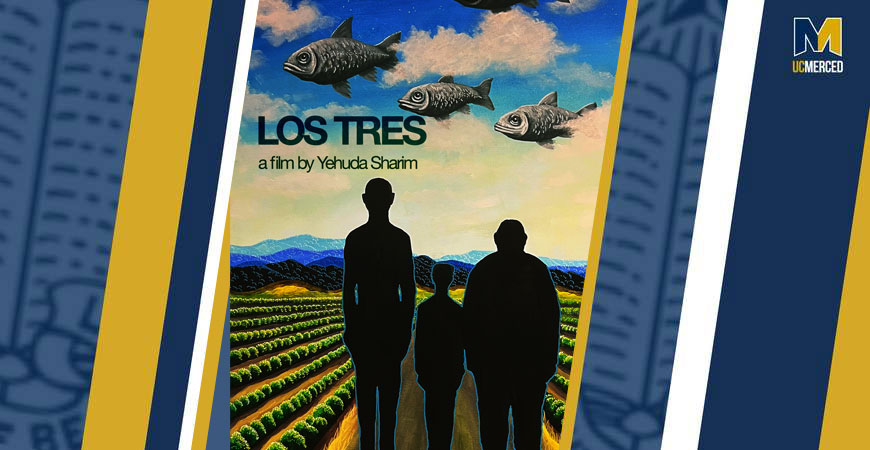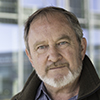
They are longtime friends, united by a passion for art and a stubborn determination not to compromise their unconventional styles. Their brushes paint scenes of fieldhands and crops coalescing in blues and reds, of a rural street splashed in watercolor or of shark fins cutting through a beach as a sandcastle rises in the surf.
Ruben Aguilera Sanchez, Frank Ayala and Abel Corchado have known each other for more than four decades. Over the years, the Merced-area men have supported each other’s work, mentored others and pushed back against expectations.
“I’m an artist who is Latino, not a Latino artist,” Ayala said.
The three are the subject of the latest film by UC Merced Professor Yehuda Sharim. The documentary, “Los Tres,” premieres Saturday, Nov. 1, at the Multicultural Arts Center, 645 W. Main St., Merced (see flier). The film starts at 6:30 p.m., followed by a question-and-answer session. There is no admission charge.
“Los Tres” is also scheduled to be screened at 7:15 p.m. Friday, Nov. 21, at the Carnegie Arts Center, 250 N. Broadway, Turlock (see flier). Admission is free.
In a recent get-together over coffee at Merced restaurant, the men talked animatedly about their craft, often finishing each other’s sentences.
“When we first got together in art, we talked about the essence of it and what our purpose was,” Ayala said. “But it’s not what the public wanted. They wanted burros and cactuses, and I don’t do that.”
“We once got a space in some stores, in the windows,” Corchado recalled.
“Mine was rejected,” Ayala said.
“No, no, no, they put up a few of yours,” Corchado said.
Ayala, Corchado and Sanchez said they have dealt for years with galleries, art institutions and other potential display spaces that wanted something other than their surreal creations. They use the word “diabetic” to describe the preferred art style. “You know, sweet and pretty,” said Ayala, a retired high school art teacher.
“I can’t paint like Frank or like Abel, nor can they paint like me,” Sanchez said. “We have our own styles and inspirations.”
Corchado said his work often places people in otherworldly places.
“Like, there’s a girl walking on a path, and the path leads to a sea and a crystal floats above the sea,” he said. “So it’s a kind of fantasy. Surreal.”
“We’re all surreal,” Sanchez chimed in. “Every one of us.”
Sanchez said the trio will kick around themes or ideas, go home and paint their interpretations, then get together to share their work.
“That’s our gallery,” Ayala said. “That’s our studio.”
Sharim, a professor of media and performance studies, was drawn to the trio’s artistic vision and their enduring support for each other.
“Their work is so inspiring. We might be used to seeing Chicano art in one way, but they rebel and challenge those expectations,” Sharim said.
“The documentary is also about friendship, about being generous with each other. It’s about community as a space of resistance and transformation, where art teaches us about a radical sense of activism, care and compassion."




 Public Information Officer
Public Information Officer

